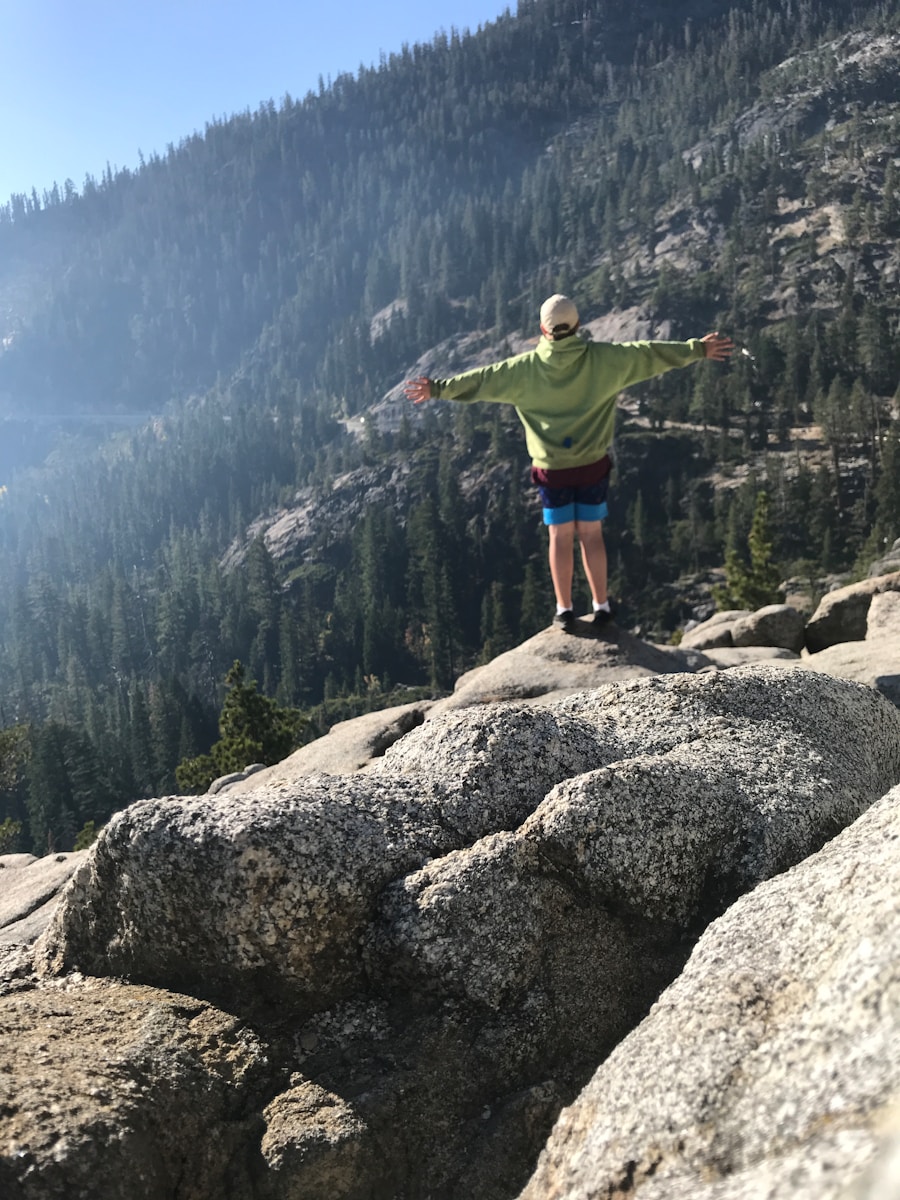Hiking is an increasingly popular form of exercise that offers a unique blend of physical activity and immersion in nature. One of the primary benefits of hiking is its accessibility; it can be enjoyed by individuals of varying fitness levels, from beginners to seasoned athletes. Unlike more structured workouts that may require a gym membership or specialized equipment, hiking can be done almost anywhere, from local parks to national forests.
This flexibility allows individuals to tailor their hiking experiences to their personal preferences and fitness goals. Furthermore, the natural terrain presents a variety of challenges, such as elevation changes and uneven surfaces, which can enhance the workout’s intensity and effectiveness. Another significant advantage of hiking is its ability to provide a full-body workout.
As hikers navigate trails, they engage multiple muscle groups, including the legs, core, and even the upper body when using trekking poles. The act of climbing uphill activates the glutes and quadriceps, while descending works the hamstrings and calves. Additionally, hiking often involves balancing on uneven ground, which engages stabilizing muscles and improves overall coordination.
This multifaceted approach to exercise not only helps build strength but also enhances endurance and flexibility, making hiking a comprehensive workout option.
Key Takeaways
- Hiking provides a full-body workout, engaging muscles and improving cardiovascular health.
- Compared to other forms of exercise, hiking offers the added benefit of being in nature and reducing stress.
- Hiking can improve mental health by reducing anxiety and depression, and boosting mood and self-esteem.
- To make the most of hiking, choose varied terrain, stay hydrated, and wear proper footwear and clothing.
- Proper gear and preparation are essential for a safe and enjoyable hiking experience, including a map, first aid kit, and emergency supplies.
How Hiking Compares to Other Forms of Exercise
Hiking offers unique advantages that set it apart from other forms of exercise.
Functional Fitness through Natural Movements
Traditional gym workouts often focus on isolated muscle groups through weightlifting or machine exercises. While these methods are effective for building strength, they may lack the dynamic engagement that hiking provides. Hiking incorporates natural movements that mimic real-life activities, promoting functional fitness. This means that the strength and endurance gained from hiking can translate more effectively into everyday tasks, such as climbing stairs or carrying groceries.
A More Enjoyable Form of Exercise
Moreover, hiking can be more enjoyable than other forms of exercise due to its scenic surroundings and the opportunity for exploration. Many people find that they are more motivated to hike than to spend time on a treadmill or stationary bike. The changing landscapes, fresh air, and sounds of nature can create a more stimulating environment that encourages longer durations of physical activity.
A Compelling Alternative to Traditional Exercise Routines
In contrast, indoor workouts may feel monotonous and less engaging, leading to decreased motivation over time. The combination of physical exertion and mental stimulation makes hiking a compelling alternative to traditional exercise routines.
The Physical and Mental Health Benefits of Hiking

The physical health benefits of hiking are well-documented and include improvements in cardiovascular fitness, muscle strength, and flexibility. Regular hiking can lead to weight loss and better body composition as it burns calories effectively while also building lean muscle mass. The varied terrain encountered on hiking trails challenges the body in different ways, promoting overall fitness and reducing the risk of injury associated with repetitive movements found in other forms of exercise.
In addition to its physical benefits, hiking has profound effects on mental health. Studies have shown that spending time in nature can reduce symptoms of anxiety and depression while enhancing mood and overall well-being. The act of being outdoors has been linked to lower levels of stress hormones, such as cortisol, which can contribute to a sense of calm and relaxation.
Furthermore, the rhythmic nature of walking combined with the beauty of natural surroundings can serve as a form of moving meditation, allowing individuals to clear their minds and focus on the present moment. This mental clarity can lead to improved cognitive function and creativity.
Tips for Making the Most of Hiking as a Workout
| Benefits of Hiking as a Workout | Statistics |
|---|---|
| Calories Burned | On average, hiking burns about 430-550 calories per hour. |
| Heart Health | Hiking can lower your risk of heart disease by improving cardiovascular fitness. |
| Muscle Strengthening | Hiking engages various muscle groups, including the legs, glutes, and core. |
| Mental Health Benefits | Research shows that spending time in nature can reduce stress and improve mood. |
| Weight Management | Regular hiking can help with weight loss and weight maintenance. |
To maximize the benefits of hiking as a workout, individuals should consider several key strategies. First and foremost, setting specific goals can help maintain motivation and track progress. Whether aiming for a certain distance, elevation gain, or duration, having clear objectives can provide a sense of accomplishment upon completion.
Additionally, varying the trails chosen for hikes can keep the experience fresh and challenging. Exploring new locations not only prevents boredom but also exposes hikers to different terrains and environments that can enhance their fitness levels. Incorporating interval training into hikes can also elevate the workout intensity.
This could involve alternating between periods of brisk walking or jogging on flat sections and slower-paced walking on inclines. Such variations in pace can increase heart rate and calorie burn while improving cardiovascular endurance. Moreover, engaging in group hikes can add a social element that makes the experience more enjoyable and encourages accountability among participants.
Hiking with friends or joining local hiking clubs can foster camaraderie while providing opportunities for shared experiences in nature.
The Importance of Proper Gear and Preparation for Hiking
Proper gear is essential for ensuring a safe and enjoyable hiking experience. Footwear is perhaps the most critical component; investing in high-quality hiking boots or shoes that provide adequate support and traction is vital for navigating various terrains. Ill-fitting or inappropriate footwear can lead to blisters or injuries that may deter individuals from continuing their hiking pursuits.
Additionally, wearing moisture-wicking clothing can help regulate body temperature and keep hikers comfortable throughout their journey. Preparation extends beyond gear; understanding the trail conditions and weather forecasts is crucial for safety. Before embarking on a hike, individuals should research their chosen trail to assess its difficulty level, length, and any potential hazards.
Carrying essential items such as a map, compass or GPS device, first aid kit, water, and snacks is also important for ensuring readiness during the hike. Hydration is particularly critical; hikers should aim to drink water regularly to prevent dehydration, especially on warmer days or during strenuous climbs.
How Hiking Can Help with Weight Loss and Muscle Toning

Calorie Burning Potential
Hiking is an effective way to promote weight loss due to its calorie-burning potential combined with its ability to build muscle tone. The number of calories burned during a hike depends on various factors such as body weight, trail difficulty, and pace; however, it is not uncommon for individuals to burn between 400 to 700 calories per hour while hiking. This makes it an excellent choice for those looking to shed excess weight or maintain a healthy body composition.
Muscle Toning Benefits
In addition to burning calories, hiking contributes to muscle toning through resistance provided by natural elements like hills and uneven terrain. As hikers ascend inclines or navigate rocky paths, they engage their muscles in ways that traditional cardio exercises may not replicate. This engagement leads to increased muscle definition in the legs, glutes, and core over time.
Enhancing Muscle Toning with a Backpack
Furthermore, incorporating additional weight through a backpack can further enhance muscle toning while also increasing calorie expenditure during hikes.
The Impact of Hiking on Cardiovascular Health
Hiking serves as an excellent cardiovascular workout that strengthens the heart and improves overall cardiovascular health. Engaging in regular aerobic activities like hiking helps lower blood pressure, improve circulation, and reduce cholesterol levels—all critical factors in preventing heart disease. The rhythmic nature of walking combined with varying intensities during hikes promotes heart health by challenging the cardiovascular system in a way that is both enjoyable and sustainable.
Research has shown that individuals who engage in regular aerobic exercise have a lower risk of developing cardiovascular diseases compared to those who lead sedentary lifestyles. Hiking not only provides these benefits but also encourages individuals to spend more time outdoors—an additional factor linked to improved heart health due to reduced stress levels associated with nature exposure. As hikers traverse different terrains at varying paces, they effectively engage their heart muscles, leading to improved efficiency over time.
Incorporating Hiking into a Well-Rounded Fitness Routine
To fully harness the benefits of hiking within a well-rounded fitness routine, individuals should consider integrating it with other forms of exercise such as strength training, flexibility work, and cross-training activities. For instance, incorporating strength training sessions focused on core stability and leg strength can enhance performance during hikes by providing additional support for climbing steep trails or navigating uneven surfaces. Flexibility exercises such as yoga or stretching can also complement hiking by improving range of motion and reducing the risk of injury during outdoor adventures.
Cross-training activities like cycling or swimming can provide variety while maintaining cardiovascular fitness without overworking specific muscle groups used predominantly in hiking. By blending these different forms of exercise with regular hiking sessions, individuals can create a balanced fitness regimen that promotes overall health and well-being while keeping their workouts engaging and diverse.
If you’re looking to enhance your hiking experience, investing in the best gear is essential. Waterproof sneakers are a must-have for any outdoor adventure, and this article highlights five top options for your spring 2025 travels. Additionally, having a reliable minimalist travel backpack can make your hiking trips more enjoyable and convenient. Check out this article for recommendations on the best backpacks to consider. And don’t forget to pack a lightweight tent for your backpacking adventures. For a guide on the best ultralight tent options, visit this article.
Love travel? Join Our Facebook Community
FAQs
What are the benefits of hiking as a workout?
Hiking is a great workout because it provides cardiovascular exercise, strengthens muscles, improves balance and coordination, and can help with weight management.
How does hiking compare to other forms of exercise?
Hiking can be just as effective as other forms of exercise, such as running or cycling, in terms of cardiovascular benefits and calorie burning. It also offers the added benefit of being in nature and exploring new surroundings.
What are some tips for turning hiking into a good workout?
To make hiking a good workout, you can increase the intensity by choosing more challenging trails, carrying a backpack with some weight, and maintaining a brisk pace. You can also incorporate interval training by alternating between periods of faster and slower walking.
Are there any potential risks or precautions to consider when hiking for exercise?
It’s important to be prepared for the physical demands of hiking by wearing appropriate footwear, staying hydrated, and being mindful of the terrain. It’s also a good idea to start with shorter hikes and gradually increase the distance and difficulty to avoid overexertion.
Can hiking help with mental health as well as physical health?
Yes, hiking has been shown to have positive effects on mental health by reducing stress, improving mood, and promoting a sense of well-being. Being in nature and getting fresh air can have a calming and rejuvenating effect on the mind.
